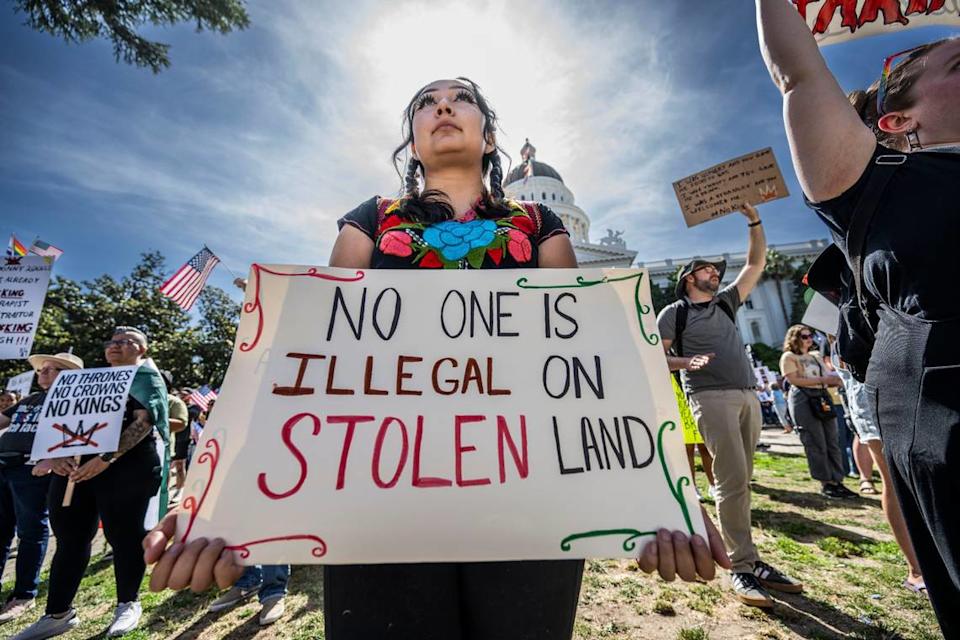On June 14, 2025, a national protest movement known as “No Kings” made headlines across the country, not only for its scale and message but also due to a disturbing incident in Culpeper, Virginia. There, a man drove an SUV through a crowd of dispersing protesters—a moment that turned a peaceful demonstration into a flashpoint.

What is the “No Kings” Movement?
Organized around a message of resistance to authoritarianism and political absolutism, the “No Kings” protests coincided with Donald Trump’s 79th birthday and a controversial military parade in Washington, D.C. These demonstrations were largely grassroots and decentralized, drawing millions across the nation.
In Culpeper, over 600 people gathered at two key locations to join in solidarity. Chants, signs, and peaceful sit-ins marked the event. The slogan “No Kings” struck a chord with attendees who voiced concern over growing authoritarian rhetoric in American politics.
The Culpeper SUV Incident
As the Culpeper demonstration wound down around 7:30 p.m., a 21-year-old local named Joseph R. Checklick Jr. drove his SUV into a crowd of protesters who were leaving the site. Police officers on scene witnessed the act and arrested Checklick shortly after.
Checklick has been charged with reckless driving and is being held without bond. One person was struck by the vehicle but did not sustain serious injuries, according to local law enforcement. Police noted that additional charges may follow pending further investigation.
The rapid response of officers and the community’s composure likely prevented a more tragic outcome. Local Democratic groups praised the police for keeping the situation from escalating further.
A Growing Pattern of Protest-Related Violence
The incident in Culpeper is part of a worrying trend. In recent months, political events have increasingly been marred by violence or threats of it. Just days before, two shootings targeted local politicians in Minnesota.
While the vast majority of “No Kings” protests nationwide remained peaceful, the Culpeper case illustrates the vulnerability of protesters during moments of dispersal—when official oversight may wane and participants are no longer tightly clustered.
As someone who has covered protests from Ferguson to D.C., I can say: The end of a demonstration is often when things get dicey. People relax. Police taper off. And that’s when bad actors seize the moment.

Why “No Kings” Struck a Chord
Despite the flashpoint in Virginia, the broader movement saw largely orderly events. Across cities like Chicago, Atlanta, Denver, and Seattle, thousands gathered with minimal police interaction. Their signs spoke volumes: “No Crown, No Master,” “Power Belongs to the People,” and “Democracy, Not Dynasty.”
The timing couldn’t have been more potent. Many participants said they viewed the Trump parade as a glorification of military power that clashed with democratic ideals. Others pointed to state-level efforts to expand executive authority.
One protester in Richmond told local news, “We’re here because history is full of people who looked the other way until it was too late.”
Legal Fallout and Public Reaction
Checklick’s actions are now under legal scrutiny, and the outcome of his case could set a precedent for handling similar incidents. Federal and state laws offer frameworks for prosecuting those who endanger peaceful assemblies, especially when the intent seems politically motivated.
Online, the incident drew sharp criticism. “Culpeper could have been another Charlottesville,” one commenter wrote, referencing the deadly 2017 car attack. Others called for stronger protective measures at protests.
What Comes Next
The “No Kings” movement is still gaining traction. Organizers plan to continue demonstrations throughout the summer, focusing on voter engagement and civic education. Meanwhile, municipalities are reevaluating protest safety measures—especially around ingress and egress points.
Culpeper may become a case study in both what went wrong and what went right. Quick police action, non-retaliation by protesters, and clear media documentation all played a role in preventing greater tragedy.






